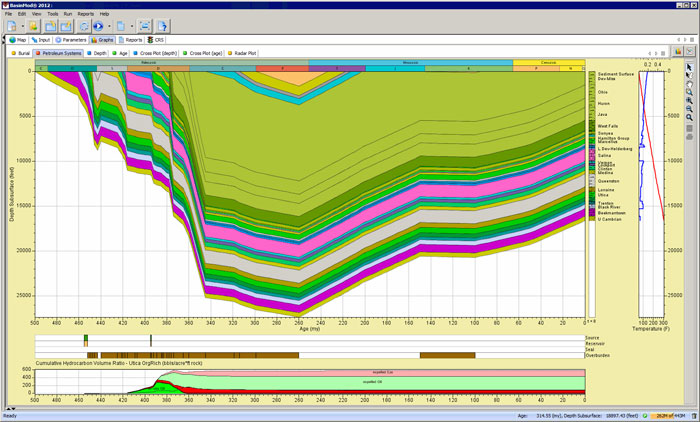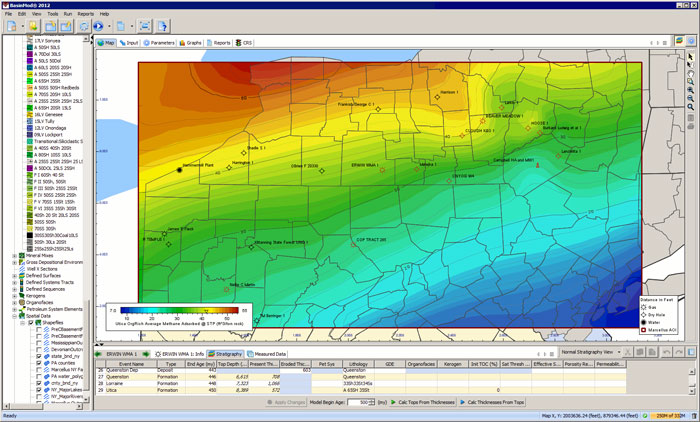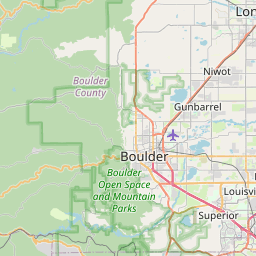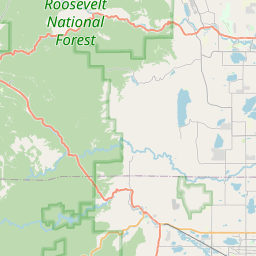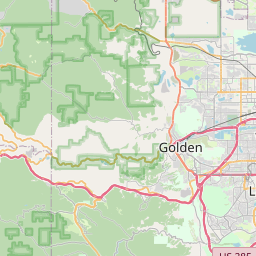BASINMOD Popular
Model the volume of hydrocarbon generation and expulsion through time for multiple wells. Both conventional and unconventional resource plays can be modelled. A wide range of other values are modeled including maturity, porosity, permeability, pressure and temperature, all of which can be used to further analyze the petroleum system.
Burial History:
- Model complex stratigraphy, including unconformities
- Select from several calculation methods for compaction, porosity, and permeability
- Model porosity by mechanical, fluid flow, or chemical compaction
- Mix lithology or mineral components to create an unlimited number of custom lithologies
- Model changes in formation thickness due to salt or shale movement (diapirs).
Diagenesis and Pressure:
- Calculate pore fluid pressure to predict the timing and/or depth of abnormal pressure regions as well as subsequent fracturing
- Enhance porosity reduction by means of quartz cementation in sand and smectite-illite conversion in shales.
Thermal History:
- Model thermal maturation and predict timing of hydrocarbon generation/expulsion
- Model basement heat flow, radiogenic heat flow, and rifting heat flow
- Vary surface temperature and heat flow through time.
Logs:
- Drag and drop logs in LAS format
- Display logs adjacent to stratigraphy column for formation top editing
- Pick porosity points from a porosity log for use in calibration.
Source Rock Organic Richness:
- Determine Total Organic Carbon (TOC) from logs of resistivity and porosity
- Calculate Initial TOC
Listing Details
Visits
3,033
Redirects
461
Don't Miss Out! Get the Best Deal on this Software - Email Us Now!
Map
© OpenStreetMap contributors
newsletter subscription
Do you have any newsletter or a platform to provide more information about the software, like introducing new features, support, technical workflows, …Thanks
generate 3D models for dynamic simulation
This software sounds interesting to me. I would like to know the workflow to generate porosity, permeability and pressures models (i.e., 3D models) with this software. Do you have any particular workflow for modeling reservoir volumes? I am a Reservoir Engineer and am interested to use these volumes in my dynamic simulation models. Does the software have any trial version that you can share with us. Thanks. 
